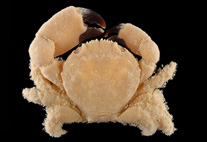Abstract
Species of the limpet genus Siphonaria (Gastropoda: Euthyneura) are commonly found in the rocky intertidal, worldwide, except in the Arctic. In total, 205 species-group names are available and not permanently invalid. However, estimating the actual species diversity of Siphonaria has remained challenging, mainly because past authors have interpreted differently the variation of shell characters, resulting in different taxonomic accounts. Species diversity of Siphonaria is evaluated for the first time here based on DNA sequence data (three mitochondrial gene fragments: COI, 12S, and 16S) and a large sampling focusing on the tropical and subtropical Indo-West Pacific (from eastern Africa to Hawaii): new sequences are provided for 153 individuals, 123 of which were collected from 93 locations throughout the Indo-West Pacific. In total, 41 species (molecular units) are recognized worldwide (31 from the Indo-West Pacific), all of which are strongly supported. Potential names are discussed for those 41 species, based on traditional taxonomy. The shells of 66 of the individuals from which DNA was extracted are illustrated: intra- and inter-specific variation is documented in detail and discussed in the light of new molecular results. It is shown that many species could hardly be identified based on the shell only, because the variation of shell characters is too high and overlaps between species. Geographically, no species is found across the entire Indo-West Pacific, where quite a few species seem to be endemic to restricted areas. The biogeography of Siphonaria in the Indo-West Pacific is compared to other groups.

